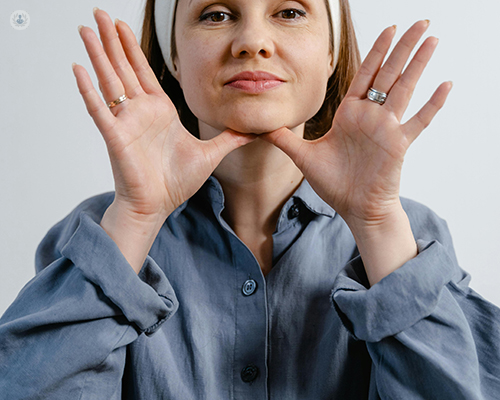Understanding facial ageing
Escrito por:As we journey through life, our faces undergo a myriad of transformations. From the subtle changes in skin texture to the more pronounced shifts in facial structure, ageing leaves its indelible mark on our appearance. But what exactly causes these changes, and how can we address them? In her latest online article, Ms Monica Fawzy gives us her insights.

The science of facial ageing:
The ageing process affects both the superficial and deep layers of our skin, leading to a multitude of changes. Skin becomes thinner, loses elasticity, and develops uneven pigmentation over time. However, perhaps the most noticeable alterations occur in the underlying facial structure. One significant change is the reversal of the 'triangle of youth,' where facial tissue gradually descends, centering along the jawline rather than the midface. This is primarily due to the loss of volume, including fat pads and even bone, as well as the sagging of the SMAS (superficial musculoaponeurotic system) muscle layer and overlying skin.
Understanding facial rejuvenation techniques:
Facial rejuvenation techniques, particularly facelifts and neck lifts, aim to counteract the effects of ageing by restoring lost volume, reducing excess tissue, and lifting sagging structures.
Facelift:
A facelift involves several techniques that target different anatomical layers of the face, such as the SMAS and periosteum (the thin layer covering facial bones). The procedure typically begins with an incision in front of the ears, varying in length based on individual needs and chosen technique. Less invasive techniques, like SMAS plication, focus on tightening the superficial aspect of the SMAS layer and are suitable for early to moderate facial ageing. On the other hand, more invasive approaches, like deep plane facelifts, involve dissection under the fibrous layer for a more extensive lift but may require a longer recovery period.
Neck lift:
A neck lift addresses sagging skin and muscles in the neck region, often performed in conjunction with a facelift due to the continuity of the SMAS layer between the face and neck. Techniques may include lateral platysmaplasty and anterior corset platysmaplasty, which lift and tighten the superficial muscle layer. Excess fat and glands under the chin can also be addressed during a neck lift, with procedures such as submandibular gland reduction and digastric muscle thinning.
Combining procedures:
Many patients opt to combine facelift and neck lift procedures to comprehensively address ageing concerns. However, some individuals, particularly those with short hair or men concerned about visible scars, may choose an anterior neck lift alone.
Ms Monica Fawzy is an esteemed plastic surgeon. You can schedule an appointment with Ms Fawzy on her Top Doctors profile.


